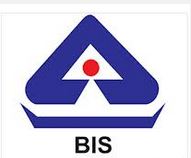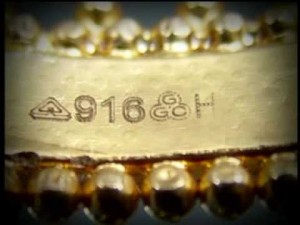In this blog post, Saanvi Singla, a student of University Institute of Legal Studies, Panjab University writes about the importance of ISI certification mark and Hallmark and procedure that needs to be followed for obtaining such marks.
Introduction
The Product Certificate Scheme of Bureau of Indian Standards (BIS) provides third party guarantee of quality, safety and dependability of products to the final customer. The presence of ISI certification mark known as Standard Mark on a product is a guarantee of the observance of specifications. The compliance is ensured by regular surveillance of the licensee’s performance by inspections and testing of samples.
In India, BIS operates a product certification scheme covering about 1000 products from Agriculture to Textiles to Electronics. BIS is empowered through a Legislative Act made by the Indian Parliament, known as the Bureau of Indian Standards Act, 1986 for this certification. The certification allows the licensees to use the popular ISI mark, which has become synonymous with Quality products for the Indian and neighboring markets over the past 50 years.
The BIS Product Certification Scheme is operated as per the Bureau of Indian Standards, 1986, Rules and (Certification) Regulations, 1988. The specific procedure for operating a license is outlined in a document called the Scheme of Testing and Inspection (STI). A body called the ‘Certificate Advisory Committee’ is made up of persons from varied sectors like manufacturers, consumers, Government agencies and industries’ associations. They review the performance of the scheme and advice on key policy issues, while the Additional Director General (Marks) is responsible for ensuring that the scheme operates within the framework of rules and procedures established.
The BIS product certification scheme is voluntary in nature and is largely based on ISO Guide 28, which provides general rules for the third party certification system. All BIS certifications are carried out by Indian Standards. A large number of operational elements of the BIS product certification scheme correspond with the requirements of ISO Guide 65.
What is an ISI mark?
We all have seen products that show that they are ISI approved products. But what is an ISI mark? ISI, in this case, stands for Indian Standards Institute. It was a body that was set up by the government after independence for proper commercial growth and to control the standard of quality of commercial goods that are manufactured in the country. By the mid 80’s, the socio-economic climate of the country changed and due to this reason a bigger and a stronger organization was required to control the quality of goods. This led to the formation of BIS- Bureau of Indian Standards.
It is legally mandatory for 90 products in India to have the ISI mark; otherwise those products cannot be sold in India. Some of these products are electronic appliances like switches, electric motors, wiring cables, heaters, kitchen appliances, etc., and products like Portland cement, LPG valves, LPG cylinders, automotive tires, etc. However, for other products is voluntary.
How to apply for ISI Mark?
Bureau of Indian Standards is the authority in India that certifies the products. For most products, it’s voluntary in nature. If a manufacturer wishes to get his/her product certified, then they have to go through the procedure established by the BIS.
A manufacturer who wishes to get the ISI mark on his/her product has to fill an application and have to submit it to the nearest BIS office. Submission of the form consists of testing equipment, details of the test procedure, process of manufacture, other enclosures and the required fee of the department. After the application has been accepted by the authority, then a BIS officer will evaluate the level of the factory, the production capacity of the manufacturer according to the standards laid down for the category in which the manufacturer has applied. Samples of the product are tested by the standards that have been issued by the authority, at the factory and a lab outside. If the test has been found to be satisfactory by the standards of the authority, then the BIS will give the license to the manufacturer.
The other way of getting the ISI license is by providing test reports after it gets the product tested in the Bureau’s lab. He can get the necessary documents certified independently. The authority has to check the reports in a month’s time and grant the usage of the ISI Mark.
What is a Hallmark?
Hallmarking is the scientific determination and official recording of the equitable content of precious metal in precious metal articles. Hallmarks are the official mark used in many countries as a guarantee of purity or fineness of precious metal articles. In India, at present only two precious metals, namely gold and silver have been brought under the purview of Hallmarking.
The BIS Hallmark is used to mark the product for its purity. Hallmark is used in India to mark the purity of gold and silver. It is used to certify that the piece of jewelry conforms to the standards that have been established by the Bureau of Indian Standards. The system of hallmarking the jewelry was started in 2000.
How to apply Hallmark?
If a jeweler wants to sell well hallmarked jewelry, he/she has to obtain a license for the sale of hallmarked jewelry for a particular sales outlet. A license is given to a jeweler for the sale of hallmarked jeweler sale at a particular premise if the application is submitted in the prescribed form along with the necessary documents and payment of the requisite fee and an agreement the license jointly with the BIS.
If a jeweler is also interested in selling hallmarked silver jewelry, then he will have to take a separate license by submitting an application and agreement. After the obtaining of the license, the jeweler has to follow all the terms and conditions that have been mentioned in the agreement. Divergence from the prescribed purity of the precious metals and non-conformance of state requirements may result in the cancellation of the license. Proceedings for penalties, in this case, shall be initiated by the BIS.
Under the BIS Hallmarking Scheme for Gold and Silver jewelry and artifacts, jewelers have to take a separate license for the sale of hallmarked jewelry for every sales outlet. A jeweler who is under the same management which has multiple sales outlets can get a corporate license that will cover all his sales outlets.
Why do we still have substandard products?
While studying about ISI and Hallmark, it became clear that like all things in the government, the structure and policies made to ensure quality and safety to the consumers are well formulated with painstaking details and are well intentioned. Logically, with such strict standards to protect the consumers, our markets should feel like those in western countries, where you can pick a product and mull about its suitability for you, but not worry about the safety and the quality of the product.
Then why are the Consumer Complaint Forums bursting at the seams about things which broke down immediately after they were bought or about promises which have not been kept by manufacturers? Why do we keep reading about counterfeit medicines and adulterated kuttuatta? We see a few possibilities:
- Complaints are mostly about non-ISI products. With only 30,000 manufacturers across the country have been granted licenses to use ISI mark.Obviously, there is an ocean of manufacturers who are operating at sub-par standards. Therefore, perhaps BSI should do remove the voluntary scheme and make it mandatory for all the manufacturers of all the products to conform to basic standards of quality.
- As there are so many complaints about ISI products, it means that the manufacturers have slipped on standards once they got the ISI certification and BIS has not been vigilant enough in catching on. (Incidentally, if you want to file a complaint about an ISI mark product, you can register it online on BIS site.)
- Shady producers use the ISI mark and cheat the consumers without actually applying for the license to use ISI through BIS. This point is acknowledged by BIS, which has resulted in the conduction of enforcement raids on such manufacturers, whose numbers have been increasing many folds every year.
Conclusion
For now, consumers must look for the ISI mark while buying a product. As you can see, getting such a license to use this is quite difficult. Keeping faith that the process is being followed, it is as good a guarantee of quality and safety as one can get today.















It’s helpful information for BIS registraation…..
Thanks a lot for sharing!!
[…] The Product Certification System Of BIS […]